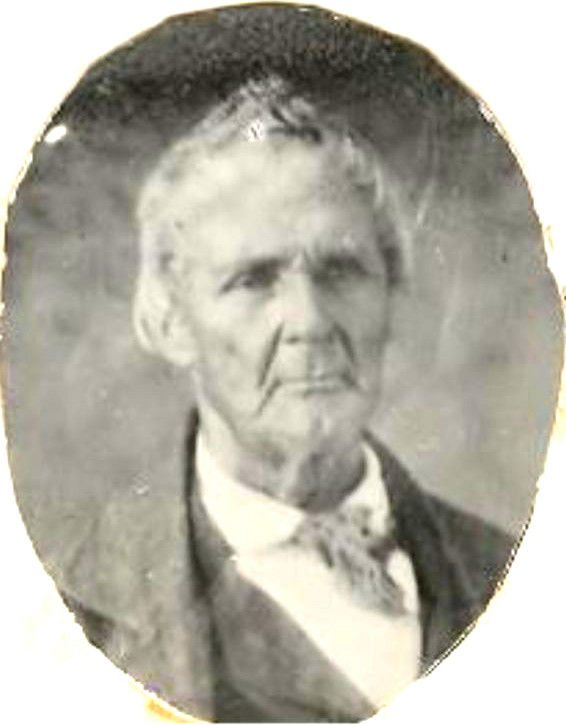COPYRIGHT 2026 SCRIPTURE CENTRAL FOUNDATION: A NON-PROFIT ORGANIZATION. ALL RIGHTS RESERVED. REGISTERED 501(C)(3). EIN: 39-2827600
Isaac Morley
(1786-1865)


D&C 52:23; 64:15-16, 20
By Susan Easton Black
Isaac Morley had a long history in Kirtland. He married his childhood sweetheart Lucy and took her to Kirtland when the town was little more than a wilderness. By clearing land, Isaac created a prosperous farm. The preaching of Sidney Rigdon in 1828 led Isaac and his wife to join the Campbellites. Believing the Campbellite stance on having “all things in common,” Isaac established a common home on his farm for believers known as “The Family.” When Latter-day Saint missionaries, who were sent to the borders of the Lamanites, stopped in Kirtland, they preached the Restoration message to “The Family.” Among those converted to the Restoration and entering baptismal waters were Isaac and Lucy Morley.
In 1831 the Prophet Joseph Smith and his wife Emma resided on the Isaac Morley farm. On June 3-6, 1831, the fourth general conference of the Church was held in a schoolhouse on the Morley farm. When the Prophet Joseph indicated that the Lord wanted Isaac to sell his farm and consecrate funds from the sale to the Church, Isaac refused. When Joseph received another revelation from the Lord, “I gave commandment that his farm should be sold,” Isaac sold his farm and willingly gave proceeds from the sale for use of the Church (D&C 64:15-16, 20).
After residing for nineteen years in Kirtland, Isaac and his family packed up their possessions and moved to Independence, Missouri in hopes of being among the first to live in New Jerusalem. Instead of an enjoying a Zion-like society in New Jerusalem, the Morleys faced extreme religious persecution:
We were threatened day and night. They told us they would burn our house down over our heads. . . . The mob gave us no peace and all the while telling us we had to leave the country or they would kill us. . . . We took our things out of the house three different times, each night expecting our house would be burned to the ground.1
Isaac was captured, imprisoned, tried for treason, and sentenced to be shot on the Independence public square. Although his execution was not carried out, he remained a target of the mob element in town. When a mob threw stones through the windows of his home, Isaac became “so unnerved, he hid in the corn field for about a month. His family would take him meals and necessities and visit him there.”2 Finally, Isaac concluded to abandon his holdings and flee with his family across the Missouri River to Clay County. When mobs threatened him and his family in Clay, the Morleys moved onto Far West.
On November 7, 1837 Isaac was ordained a patriarch in Far West. Within a year of his ordination, he was captured and taken prisoner to Richmond, Missouri. For three weeks, he waited for a judge to hear his case. When the case was presented before the judge, it was concluded there was not enough evidence to keep him incarcerated. His case was dismissed, and Isaac permitted to return to Far West.
Believing that he could not live in Northern Missouri unmolested, Isaac and his family moved to Illinois, settling in what became known as the “Morley Settlement” or Yelrome, which is Morley spelled backwards. Isaac enjoyed peace in the settlement until September 1845 when mobs attacked the community. In the fire that encircled the community, Isaac lost his home, cooper shop, and grain.
Isaac and his family moved to Nauvoo. From there, they trekked across Iowa and the plains on their journey to the West. In October 1849, Isaac led over two hundred settlers to Sanpete Valley. Upon seeing the present site of Manti, he stated, “This is the place. Here I will stay.”3 As he grew older, Brigham Young “thought it too much for so old a man as Father Morley (to struggle longer in this total situation) so called him back to Salt Lake City.”4
In obedience, Isaac returned to the city. However, he did not remain long in Salt Lake. He moved to Santaquin, Utah, before making his residence in Fairview. For ten months he lay nearly helpless until death overtook him on June 24, 1865 at age seventy-nine.
1. John Clifton Moffitt, “Isaac Morley on the American Frontier,” p. 9. Church History Library.
2. Florence Allen Cheney, “Biography of Lucy Gunn Morley, p. 3. Church History Library.
3. Moffitt, “Isaac Morley on the American Frontier,” p. 38.
4. Ibid., p. 47.
Additional Resources
- Biography of Isaac Morley (josephsmithpapers.org)